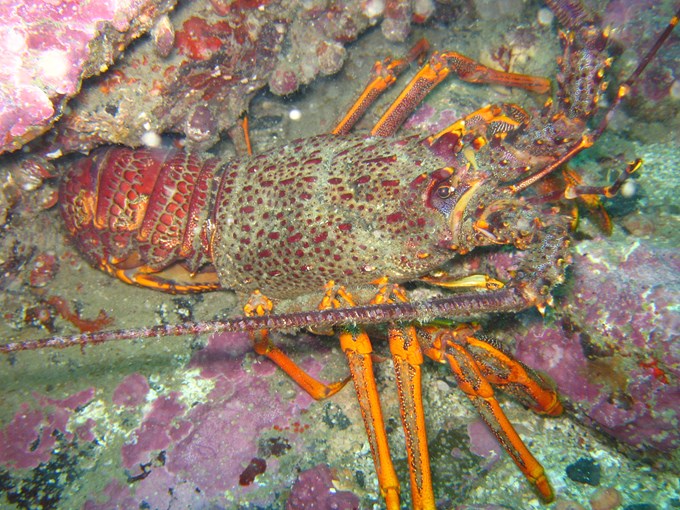Crayfish (rock lobster) numbers have dropped to record lows in marine reserves at Leigh and Tawharanui.
Details of a recent University of Auckland survey were discussed at this month’s Hauraki Gulf Forum meeting and members expressed concern about the results.
The stats
Dr Nick Shears, a University of Auckland marine biologist at the Leigh Marine Laboratory, says crayfish numbers inside the two reserves are down a further 25 per cent from 2014.
Earlier this year scientists found crayfish numbers inside Goat Island reserve were lower than when it was established in 1975, and less than a quarter of their peak in the 1990s.
Numbers outside the reserves are also the lowest they have been since monitoring began in the 1990s and are estimated to be now less than five per cent of the natural, unfished level.
Questioning reserve boundaries
Dr Shears attributes the decline in the reserves to sustained fishing pressure on their boundaries, as well the state of the broader ‘CRA2’ fisheries management area (the Hauraki Gulf and Bay of Plenty).
He says the offshore boundaries of the reserves should be extended.
“To more effectively protect crayfish and other resident animals within their home ranges, the offshore boundary of the Goat Island reserve – and similar-sized reserves at Tawharanui and Hahei – would need to be extended from the current 800 metres to three kilometres offshore,” he says.
Hauraki Gulf Forum Chairman John Tregidga said he expected the Sea Change Tai Timu Tai Pari marine spatial plan, due at the end of this year, to address marine reserves and fisheries management issues in an integrated way.
Ministry for Primary Industries aware
Asked for comment by the Forum, the Ministry for Primary Industries (MPI) says it is aware of ongoing concerns about numbers of rock lobster in the CRA2 area. It says the MPI reduced the commercial catch limit in 2014 and the fishing industry has voluntarily made further reductions to commercial catches this year.
MPI will review catch limits for April 2017 to assess whether the numbers of rock lobsters have increased following the reductions in catch.
MPI says it will carry out a full scientific assessment of the fisheries management area next year, which will form the basis for a further and comprehensive management review scheduled for 2017/18.
MPI will also be engaging with local communities on the issues and potential long-term solutions. This will help inform the 2017/18 full review and ensure this important fishery is managed at a level that provides benefits to all users.


